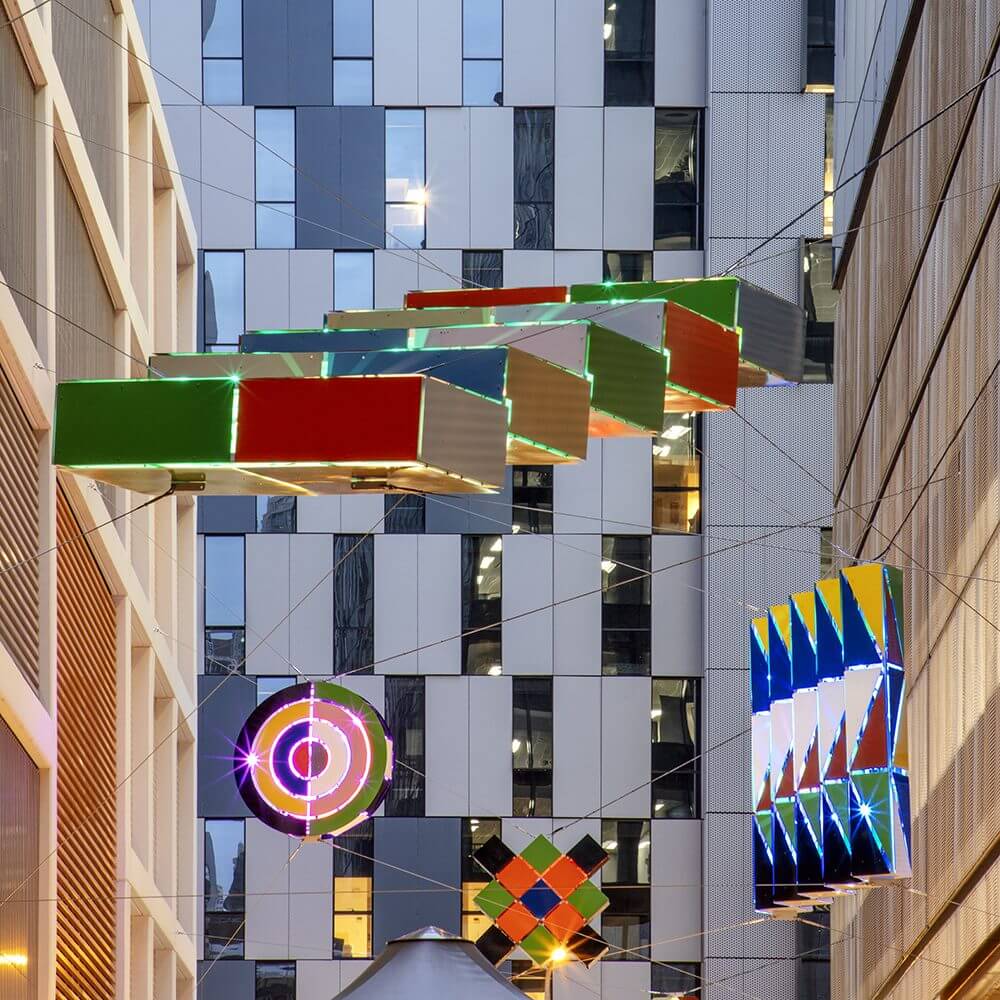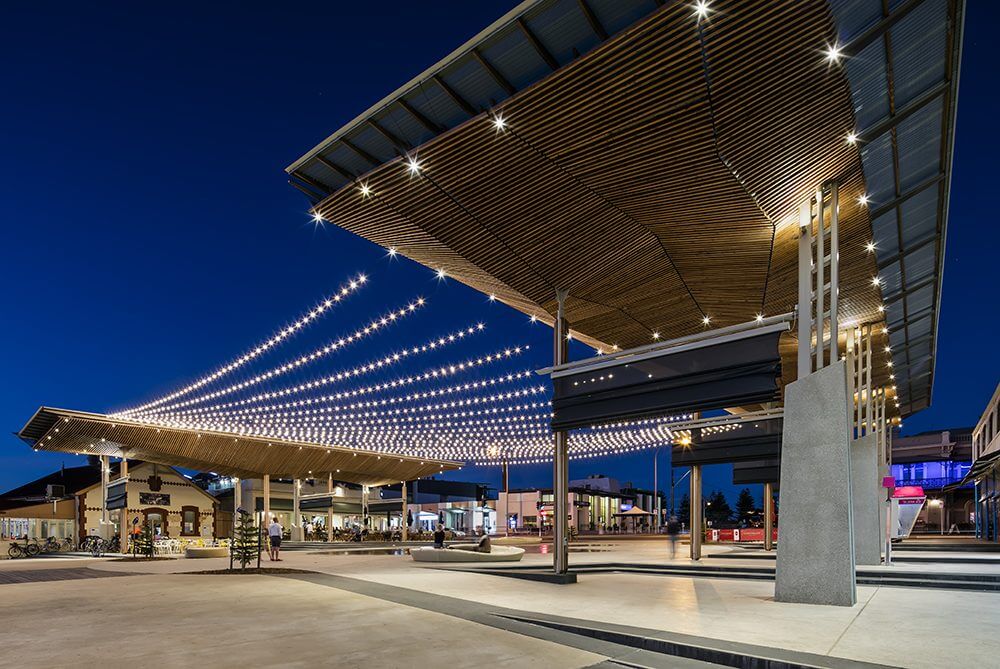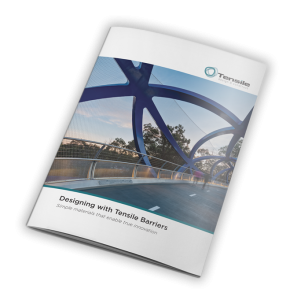Catenary lighting – strings of overhead lights suspended on cables – is a great solution for illuminating spaces after dark. Some typical applications for catenary lighting include in town squares, laneways, shopping and dining precincts and carparks.
But catenary lighting is about more than just security and safety, crucial though these things are. It can be used to decorate a space, encourage certain activities, or create a desired mood and ambiance.
Temporary and portable catenary lighting solutions are also possible for seasonal lighting displays at Christmas, night festivals and pop-up spaces for example.
The first things to consider are the purpose of the installation, and where the lights should be positioned. Then you can think about design and architectural factors, as well as correct engineering to ensure the installation does what it’s supposed to do.
Catenary lighting design and architecture
Catenary lighting installations allow for considerable design freedom.
They offer:
- Span – the use of stainless-steel cables allows for large overhead spans. The Henley Square installation in Adelaide for example has spans of up to 30 metres.
- Luminaires – in terms of style (e.g. pendants, festoons, lanterns), colour, height, arrangement, fittings, light intensity and angle, shadow and programming.
- Decorative elements – an example is the Steam Mill Lane installation, which combines both catenary lights and boldly-coloured suspended sculptures.
- Ambiance – you can use your installation to create just about any mood you want, from playful, festive and invigorating to subtle and tranquil.
- Anchor points – the great thing about catenary lights is that you don’t end up with large poles intruding into the space. Anchor points for the cables can be purpose built (e.g. specially designed canopies) or involve the use of pre-existing structures such as building walls.

Engineering factors
Precision engineering helps avoid excess swaying of cables and prevents failure of the installation.
The main factors to consider here include:
- Site conditions – in terms of size, effect of wind and temperature, power connection needs and places for cable anchoring.
- Cable materials – in a commercial installation, the cables must be robust and strong enough to carry the load and cope with surrounding conditions for a long period of time. Using robust stainless steel wire rope enables you to use a fine cable that becomes almost invisible, especially at night, and that can last two decades or more.
- Load – e.g. the weight and placement of the luminaires and any additional load requirements such as artworks.
- Sag and deflection – the support systems and cables should be correctly tensioned to prevent excess sway and sag.
- Maintenance and repairs – considerations for ongoing maintenance should be factored in at the design stage, and should include matters like cleaning, light replacements, electrical faults and cable and anchor repairs or replacement.
Precision engineering allows for installations that might not normally be considered possible. An example is the Reflect light sculpture at Arc by Crown, where over 2,000 suspended lights were installed in a very tight space using 6mm wire rope cables.
At Tensile, we have been involved in many catenary lighting installations, with each one being unique in terms of purpose, design and outcome. Please get in touch if you have a lighting project you would like to discuss.







































